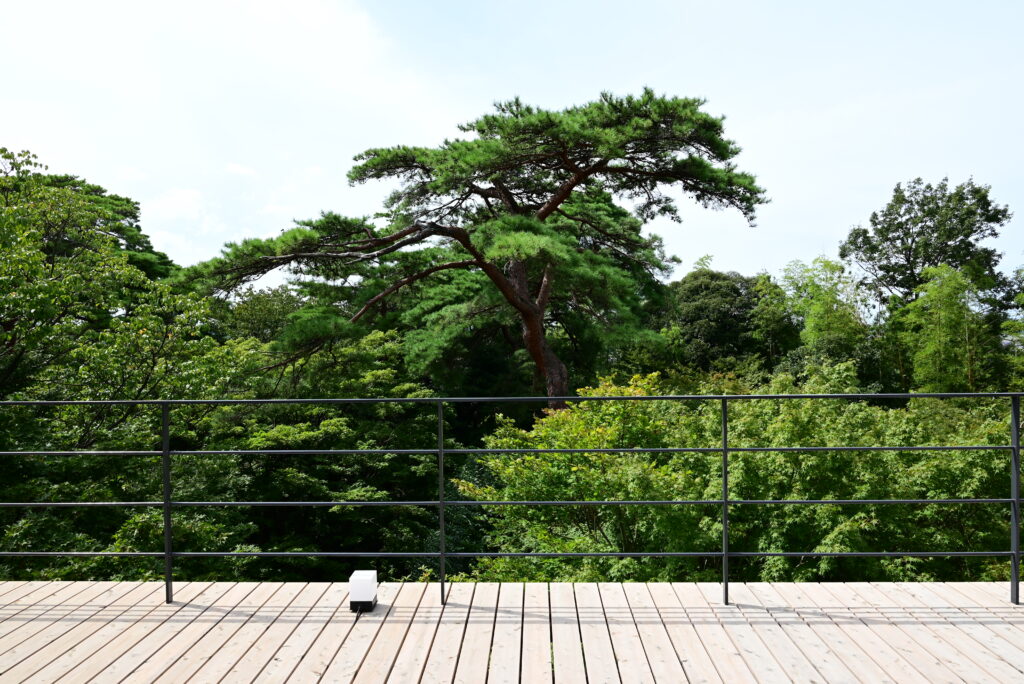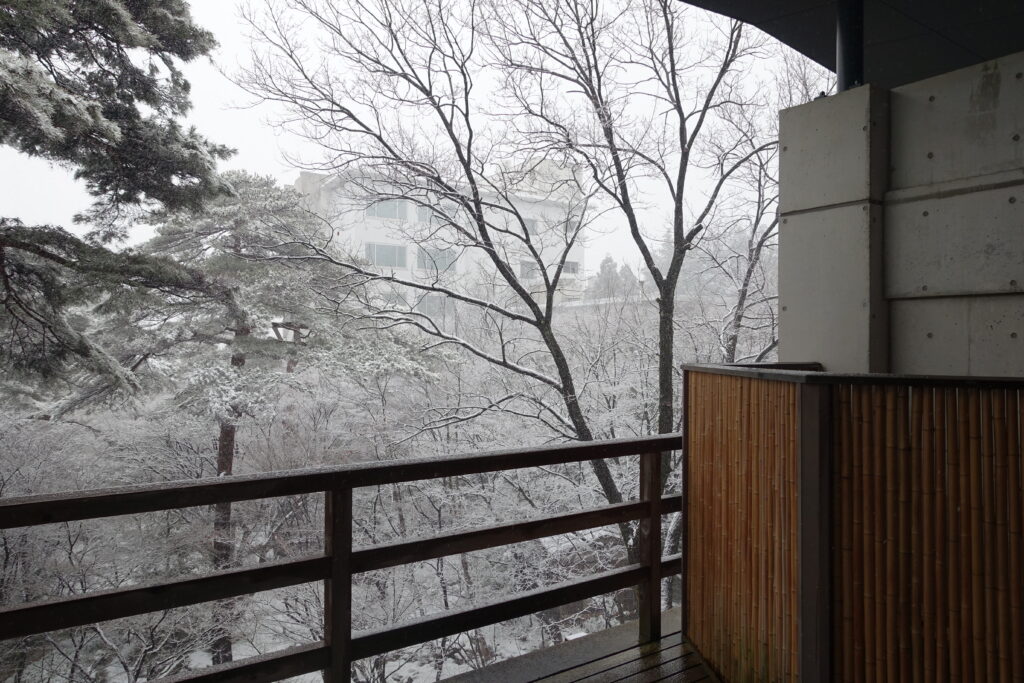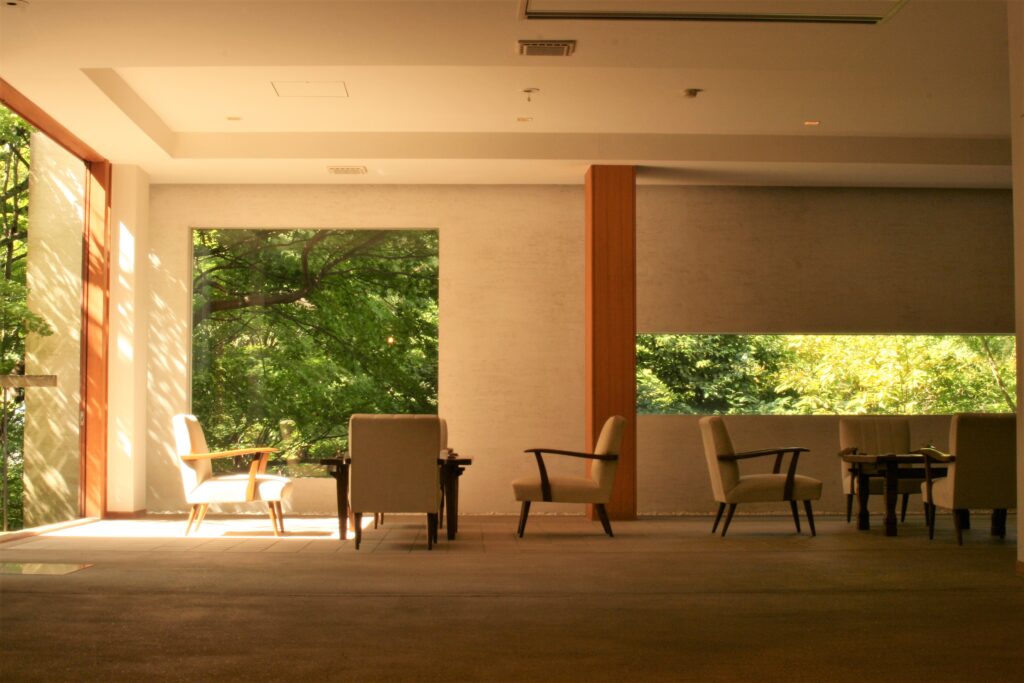3.1 Finding one’s position in nature, changing your life and discover where you fit in

Sachiko: In Chapter six, you wrote that you had the opportunity to stay in the place that had once been the monks’ quarters of the Kouunji Temple in Kyoto光雲寺 and interviewed five Zen Buddhist monks. Let me say that was a very precious experience which normally even Japanese people cannot have. I felt a special affinity with this sentence:
What the monks were saying was telegraphic, which is: find your position in nature, change your life, and discover where you fit in. (page 107)
Scott: Exactly. Right. I mean I think it’s a principle of Zen that instead of fighting nature you want to say: “Well, what does nature expects from me?” Like when it snows a lot. Instead of getting angry about it, instead of saying “Argh!” you say: “You know what? I’m going to take it a little bit slower today, I’m going to be late for my appointment. We’re going to figure out a way to get to town that’s not stressful”. You have to accept the situation. So, what each one of the monks would say, in one way or another, was: “Try to understand what’s going on in nature and try to adapt to it” What does nature expect of us? If it’s a rainy day you’re not going to go for a long walk maybe…
Sachiko: … Maybe you can adjust your plans.

Scott: You’ll have to adjust your plans and also maybe it’s a good thing, maybe it’s good to stay indoors and take it slow, maybe that’s good… because, you know, when you look at animals, they get sleepy in the winter. Maybe we should be more like the animals, you know! So, one of the monks told me that the idea was “acceptance”. I mean, that is the principle of Zen that you can’t fight these things because it’s only going to lead to more frustration.
Sachiko: The reason why I was very impressed and interested by the monks’ words “find your position in nature change your life and discover where you fit in” is because that is just what my husband and I tried to do. A few weeks ago, the interview with Akiko Katayama片山晶子for Japan Eats! was also a good chance for me to look over the path we walked, and I noticed nature always gives me a big hint. That is why this time I would like to talk about nature. Going back to my personal experience, the concept of Beniya Mukayu is strongly rooted with the nature in my childhood.
I have been Beniya Mukayu’s okami 女将 for more than thirty years. During this time, what my husband and I tried to create is an ideal place where guests can find their position in nature and discover where they fit in, as the Zen Buddhist monk said. Recently I had the chance to reflect on the origin and development of Beniya Mukayu, and realized how important it is to express what one has been cherishing since the childhood for creating a reality that matches one’s vision. I mean: what, as we say in Japanese: genfukei 現風景, what one has ‘deep in one’s mind’ from the childhood.

In the past weeks, I have been thinking a lot about this and I came across some examples of people who have a similar experience. Let me talk about a chef before telling you about myself, Scott. The other day, I watched a documentary about Hajime Yoneda 米田肇, the owner and chef of a restaurant called Hajime in Osaka. Hajime Yoneda was born in Osaka in 1972. He studied electronic engineering, and then at twenty-six, he turned into a chef after quitting a job in an important electronic company. He built his career in restaurants in Japan and France and then opened Hajime RESTAURANT GASTRONOMIQUE OSAKA JAPON in 2008. His restaurant got three Michelin stars in one year and five months, the shortest in the world in Michelin history. In the documentary, Yoneda says: “My aesthetic sense originated in the natural scenery when I was a child”, that is what he had ‘deep in one’s mind’ from the childhood. This awareness came after a crisis. Yoneda explained that “The memory of running around the fields as a child saved me when I was stuck in cooking”. In fact, six months after opening his restaurant he could not create any new dishes. He decided to take a break and go back to France and train at a friend’s restaurant. One day, his friend told him that the dishes that Yoneda was “creating” in Osaka were just copies of what he had learned from Michel Bras in France. Yoneda was shocked, and this triggered a deep self-reflection. He acknowledged that, being Japanese, his dishes were not rooted in French cuisine, and that he had to search deeper inside himself. In his words: “One day, the scenery of playing in the mountains of Hirakata all day long when I was a child came to my mind. A nice breeze is blowing, bugs are flying, and I’m dipping my feet in a cold river trying to catch fishes. The bright sun and the deep blue sky above. The surface of the water that reflected the light is shining. I suddenly remembered thinking, ‘Wow, how beautiful it is!’ I strongly felt that this was the root of my original landscape and aesthetic sense.” That was the turning point. That was the moment when he decided to quit French cuisine. He decided to stop referring to French cookbooks and to follow his heart: he aimed to “express the beauty of nature on a plate as it is”, and make something that he thought was really delicious. Earth, his signature dish, was born shortly after that moment of clarity and awareness.





